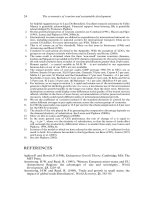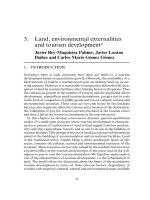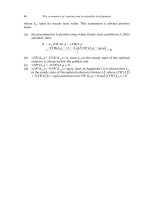THE ECONOMICS OF MONEY,BANKING, AND FINANCIAL MARKETS 424
Bạn đang xem bản rút gọn của tài liệu. Xem và tải ngay bản đầy đủ của tài liệu tại đây (56.61 KB, 1 trang )
392
PA R T V
Central Banking and the Conduct of Monetary Policy
Appoints three
directors to
each FRB
Federal
Reserve System
Board of Governors
Seven members, including
the chairman, appointed
by the president of
the United States and
confirmed by the Senate
Twelve Federal Reserve
Banks (FRBs)
Elect six
directors to
each FRB
Member Banks
Around 2900
member
commercial
banks
Each with nine directors
who appoint president
and other officers of
the FRB
Select
Federal Open Market
Committee (FOMC)
Federal Advisory Council
Twelve members (bankers),
one from each district
Seven members of Board
of Governors plus
presidents of FRB of New
York and four other FRBs
Establish
Reviews and
determines
Directs
Sets (within
limits)
Policy Tools
Advises
Reserve
requirements
FIGURE 15-1
Advises
Open market
operations
Discount
rate
Structure and Responsibility for Policy Tools in the Federal Reserve System
Dashed lines indicate that the FOMC advises on the setting of reserve requirements and the
discount rate.
The twelve Federal Reserve banks
and the Board of Governors are actively involved in decisions concerning the conduct of monetary policy. In particular, all seven governors are voting members of
the FOMC together with the president of the Federal Reserve Bank of New York and
presidents of four other Federal Reserve banks. The FOMC usually meets eight times
a year (about every six weeks) and makes decisions regarding the conduct of monetary policy in the United States. Indeed, the FOMC is often referred to as the Fed
in the press: for example, when the media say that the Fed is meeting, they actually
mean that the FOMC is meeting.
FEDERAL OPEN MARKET COMMITTEE (FOMC)
The Federal Reserve appears to be remarkably free
of the political pressures that influence other government agencies in the United
States. Yet it is still subject to the influence of the president of the United States, since
the president appoints members to the Board of Governors. The power of the
HOW INDEPENDENT ISTHE FED?









